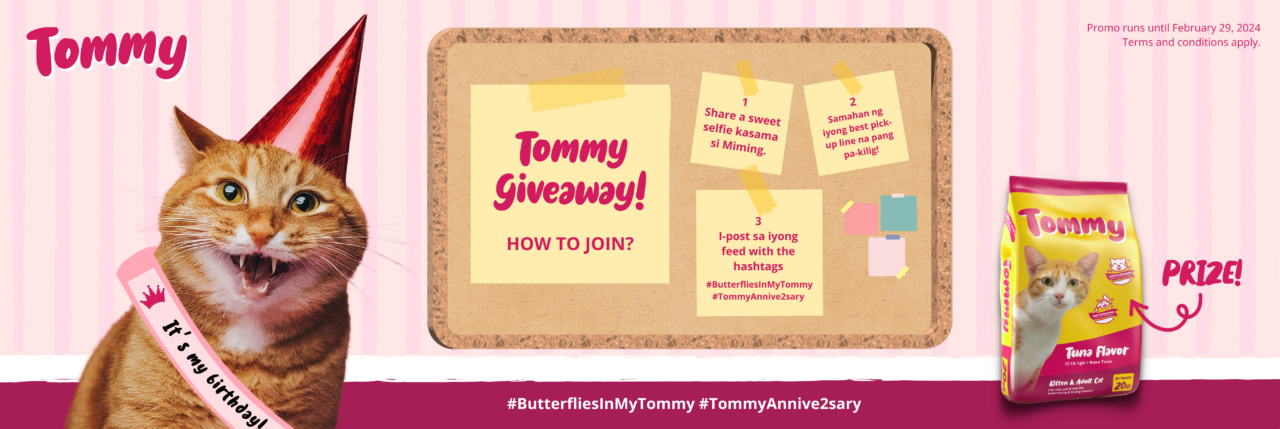More often than not, it has always been presumed that cats cannot be trained—that they are their own bosses and they listen to no one. However, proud cat owners can attest that cat training is not as far fetched as it seems. It actually enhances the bond between hoomans and their floof babies!
Cat training has been said to be an immensely rewarding experience for both pawrents and their feline companions. These floofs of fur and whiskers do not just sit around and stare down at people, but also long to be trained and conditioned.
With the right approach, patience, and understanding, you can easily teach your cattos a variety of tricks and cat training commands that can help you live your best life together!
Understanding the Basics of Cat Training
Before going straight into the specifics of cat training, it’s important for us, pawrents, to understand our feline companion’s nature. Naturally, cats are curious and independent animals, that’s why a successful training requires a gentle, positive, and a very patient approach. Yelling at them, punishing them, or showing them any form of aggression will only lead to fear and stress, making your training efforts counterproductive.
Begin with Simple Commands
You can kickstart your catto’s training journey with simple commands that are easy to grasp, like “sit,” “come,” and “stay“, which are great starting points. It would also really help if you do it first in a quiet, familiar space where your cat feels safe and secure. Always remember to use a calm and soothing tone when giving commands, and reward positive behavior with praise or treats, too!
Be a Patient Pawrent
Training these independent balls of fur requires a lot of patience, as each feline is unique and learns at its own pace. There may be some cats that respond quickly, while others may take longer to understand and follow certain commands. Make sure to be prepared for setbacks, and never force your catto to comply. Instead, celebrate their small achievements, show them your enthusiasm, and build upon them gradually.
Use Yummy Treats as Positive Reinforcement
Everyone knows that one of the most effective ways to motivate your floof babies during training is through the use of mouth-watering treats as positive reinforcement. Cats are food-motivated creatures, and treats can help serve as a powerful incentive to encourage them to do and follow commands.
Pro cat training tip: When introducing a new command, hold a treat close to your catto’s nose, and then move it to guide them into the desired position. Once your cat follows the command correctly, reward them with the treat and offer praise, like petting and rubbing their heads or face. Just make sure to use treats in moderation to avoid overfeeding and potential health issues.
Choose the Right Treat
When it comes to cat treats, not all snacks are created equal. Always opt for high-quality, soft, and bite-sized treats that are both delicious and easy to chew. Avoid using large treats, too as they may distract your cat for too long and disrupt the training session’s flow. Additionally, consider your cat’s dietary restrictions and choose treats that align with their nutritional needs.
Be Consistent
Consistency is the backbone of every successful pet training. Establishing a regular training schedule with your cat, keeping sessions short and engaging can make tricks and command-learning easier. Cats have short attention spans, so it’s better to have frequent, brief sessions rather than lengthy, infrequent ones. Consistency in using the same commands, gestures, and rewards will help your cat better understand what you expect from them.
Observe Your Cat’s Body Language
During training, make sure to pay attention to what your catto’s body is saying. Signs of stress, fear, or disinterest, such as flattening of the ears, a swishing tail, or attempts to escape—they all may indicate that it’s time to stop the training for the day. As a loving pawrent, you have to also respect your cat’s boundaries and never force them to continue if they are not in the right frame of mind.
Play While Training
Make training more fun for the cattos by incorporating playtime into your sessions. Use a variety of toys and interactive games to stimulate your cat’s interest and energy. Some pawrents have found this to be particularly effective when teaching your cat to “come” or to follow a specific path or direction. The element of play will not only make training enjoyable for your cat, but also deepen and strengthen your bond with them.
Be Ready for Challenges
During your training process, you may encounter some challenges. For instance, if your cat isn’t responding to a specific command, you can try and break it down into smaller steps. If “stay” is a bit difficult for the floof, work on “sit” and “come” first before combining them. When your cat seems disinterested, review your reward system or approach, and consider trying different treats or using more enticing incentives.
Training your cat is a wonderful way to connect with your feline babies and create a harmonious living environment. Always remember that patience, consistency, and positive reinforcement are key to a successful training journey. Be sure to also keep your training sessions short, playful, and engaging, and always pay attention to your cat’s body language so they can enjoy the process, too.
With a little time and effort, you’ll be amazed at the incredible tricks and commands your cat can master. So, embrace the awesome adventure of cat training and enjoy delightful moments of achievement along the way with your floof baby!




